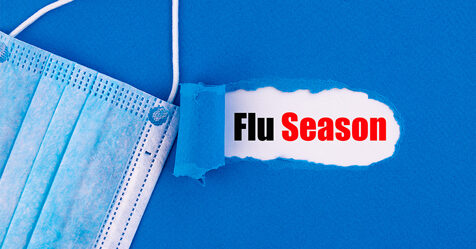PRESS RELEASE
PLEASANTON, CA — The long-term care industry faces a multitude of challenges when it comes to keeping residents happy and healthy, including maintaining cleanliness and reducing the risk of the 1.5 million infections estimated to occur in long-term care facilities each year.[1],[2] Clorox Professional Products Company recently surveyed U.S. adults with a friend or family member in a long-term care facility and found they cite the risk of infection as a top concern,[3] among other things — further attesting to these unique challenges.
Long-term care facilities are both a healthcare setting and a home for elderly, often immunocompromised, residents, which means staff are challenged with keeping them healthy and minimizing the spread of infections, while also maintaining a clean, comfortable and home-like environment. Routine cleaning and disinfecting, however, plays a big role in helping maintain a healthy and comfortable environment.
Long-Term Care Challenges
The spread of infections in long-term care facilities is one of the biggest challenges facing the industry. Infections can easily lead to hospitalizations that expose elderly residents with weakened immune systems to dangerous pathogens and healthcare-acquired infections (HAIs). These not only impact their own health, but also have the potential to spread to fellow residents once the patient returns. According to research published inThe Journal of the American Medical Association,norovirus outbreaks, in particular were associated with significant concurrent increases in all-cause hospitalization and mortality in nursing homes.[4]
“Infection prevention is extremely important, yet challenging in long-term care facilities,” saidSherrie Dornberger, RN, executive director, The National Association of Directors of Nursing Administration/Long Term Care.”Residents live in close quarters and interact with clinical staff and often each other every day, which makes transmission of highly contagious germs like influenza, norovirus and evenC. diffand MRSA quite easy. This can quickly lead to outbreaks and even hospitalizations. Effective staff education, cleaning protocols and having the right products on hand can make a big difference in minimizing the spread of infection.”
Another challenge is maintaining facility cleanliness, including minimizing odors. Urine odors and stains present one of the toughest challenges when it comes to cleaninganyfacility, but in long-term care settings the problem is not limited to restrooms. The prevalence of incontinence means that urine and other bodily fluids can appear in a variety of settings – such as bedrooms, common areas and hallways, as well as on soft surfaces such as cushions, chairs and mattresses.
Understanding Consumer Perception of Long-Term Care Facilities
The results of a recent survey by Clorox Professional Products Company further underline the importance of maintaining a clean and healthy facility since cleanliness and the risk of infection are top concerns among consumers with a friend or family member in a long-term care facility.3The survey found that:
- The majority of consumers cite overall cleanliness as a top factor influencing their decision in selecting a long-term care facility for a friend or family member (71%).3
- When it comes to the cleanliness of long-term care facilities, consumers are particularly concerned that soft surfaces are not given enough attention. Half of consumers surveyed say they are concerned that soft surfaces are not cleaned regularly at their loved one’s long-term care facility (49%).3
- Consumers also equate odor to a lack of cleanliness. More than two in five say that odor influenced their selection of a long-term care facility (44%).3
- Infection prevention was also top-of-mind among four in five consumers who say they are concerned about the risk of infection (79%).3
- One in five say they worry about a risk of infection because the facility does not smell clean (21%).3
- Finally, more than two thirds of consumers say they would be more likely to enroll their loved ones in a long-term care facility if they knew the facility used Clorox products (68%).3
Tackling the Needs of Long-Term Care
These findings attest to the unique challenges facing the long-term care industry. To help tackle these tough jobs, Clorox Professional Products Company offers a range of products like Clorox®Urine Remover, Clorox®4 in One Disinfectant & Sanitizer and Clorox Healthcare®Bleach Germicidal Wipes that work hard to make cleaning easier and life more comfortable.
“We understand the challenges long-term care facilities face and are committed to helping them in their efforts to keep infection rates and re-hospitalizations low, and enhance resident comfort through a clean, home-like environment,” saidJennifer Case, marketing manager, Clorox Professional Products Company. “Our disinfecting products are trusted by hospitals, business owners and cleaning industry professionals alike to prevent the spread of infectious germs and keep their facilities clean. We are now proud to bring this high standard and commitment to long-term care.”
Learn more about Clorox Professional and its products atwww.CloroxProfessional.com/longtermcare.
About the Survey
Ketchum Global Research & Analytics designed and analyzed this nationwide online survey of 1,019 adults with a friend or family member in a long-term care facility, such as a nursing home or assisted-living facility. Ipsos fielded the survey fromDecember 16-27, 2013. The survey has a margin of error of +/-3.1 percentage points.
About Clorox Professional Products Company
Clorox Professional Products Company, a division of The Clorox Company (NYSE: CLX), offers some of the industry’s most recognized brand names for the commercial, cleaning and infection prevention industries. Whether it is hospitals, offices, restaurants, schools, hotels or other commercial facilities, Clorox Professional Products Company is committed to meeting the demands of industry professionals. For more information, visitwww.CloroxProfessional.com.
[1] Rebmann T. “2008 APIC Emergency Preparedness Committee. APIC state-of-the-art report: The role of infection preventionist in emergency management.” American Journal of Infection Control37.4 (2009): 271-281.
[2] Centers for Disease Control and Prevention (CDC).CDC’s Disaster Planning Goal: Protect Vulnerable Adults.CDC website. n.d. Available at: https://www.cdc.gov/aging/pdf/disaster_planning_goal.pdf.
[3] Clorox Professional Products Company and Ipsos. (December 2013). Long-Term Care Consumer Survey. (Survey of 1,019 U.S. adults)
[4] Trivedi, T.K., DeSalvo, T., Lee, L. “Hospitalizations and Mortality Associated With Norovirus Outbreaks in Nursing Homes, 2009-2010.” Journal of the American Medical Association. 308.16 (2012): 1668-1675.

